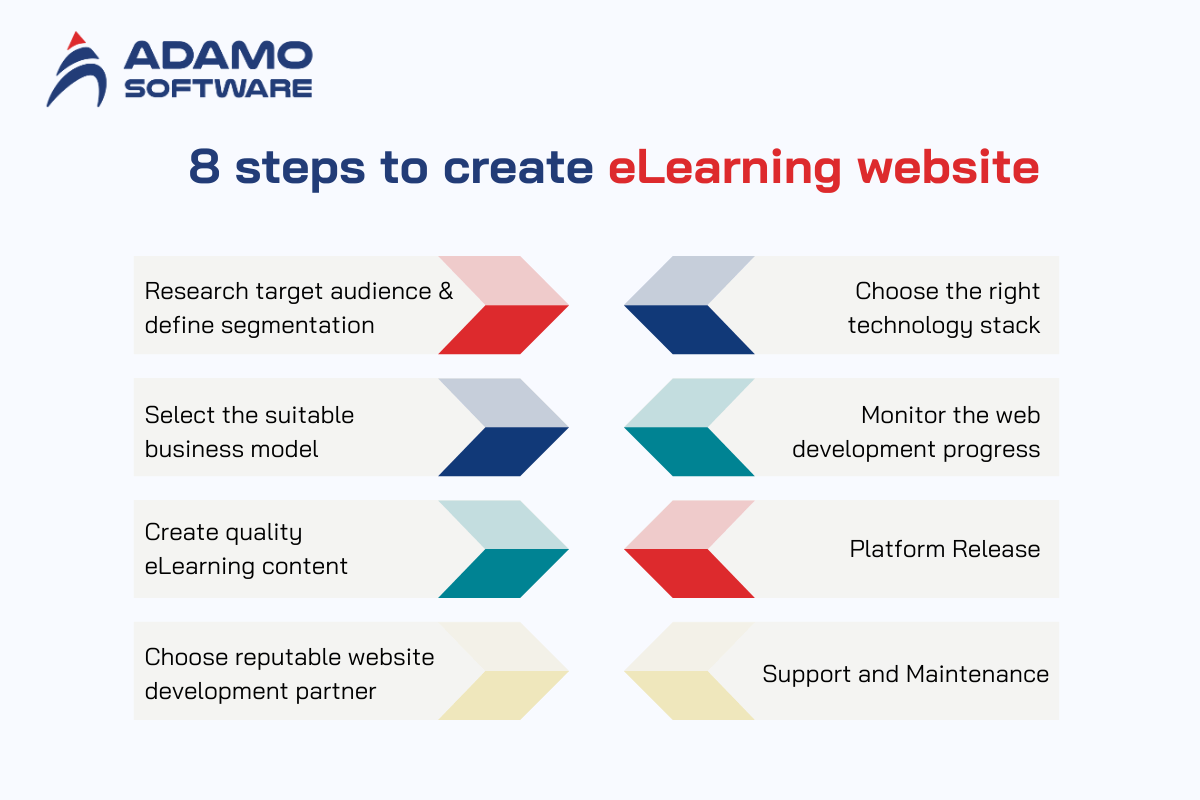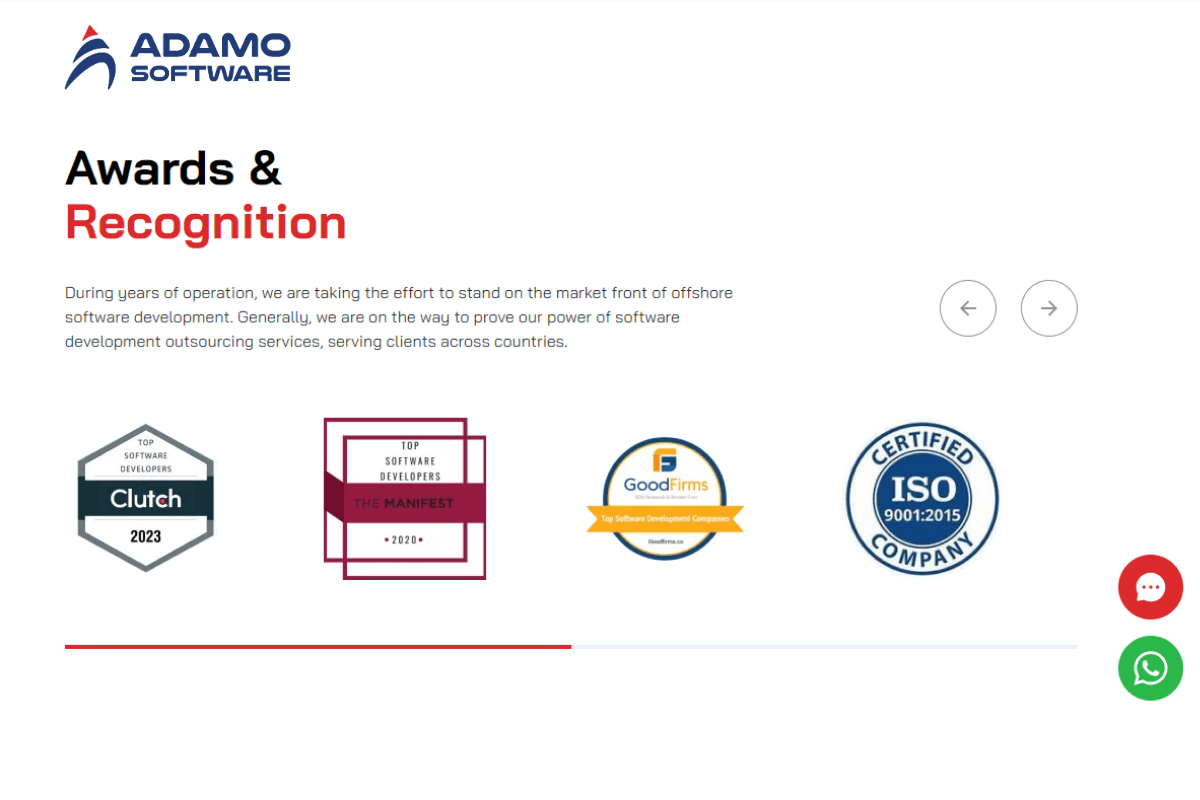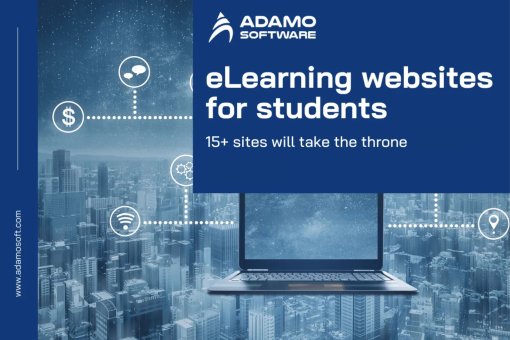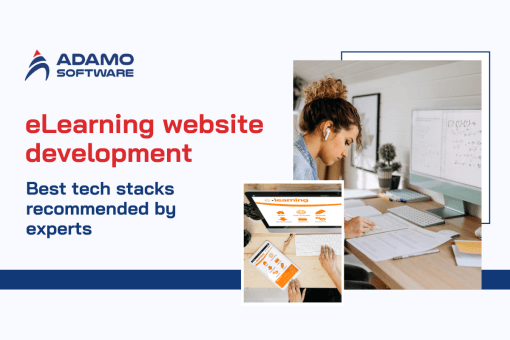How to create eLearning website: A step-by-step guide from scratch

The eLearning platform industry has grown exponentially in recent years. It is increasingly becoming an essential part of modern education. Building an eLearning website can be a profitable project for an educational institution, a corporate training provider, or an entrepreneur.
eLearning websites have proven to be more effective than traditional education systems. If you have ever had the idea of building an educational IT project, then it is time to consider creating an eLearning website. This will be an ideal platform for you, whether a small or large business. This blog will cover everything you need about custom eLearning website development and how to create eLearning website.
Here is a step-by-step process, from initial planning to launch and beyond:
1 – Research your target audience and define your segmentation
2 – Select the suitable business model
3 – Create quality eLearning content
4 – Choose a reputable website development partner
5 – Choose the right technology stack
6 – Monitor the web development progress
7 – eLearning website release
8 – Website support and maintenance

I. Research your target audience and define your segmentation
Every eLearning platform and website development process starts with research. So, first, analyze your target audience and segment. Here are some key points to research:
- Age
- Interests
- How they spend their free time
- eLearning site usage behavior
Next, research personalized content. Identify the topics you want to cover and discover what content will be exciting and valuable to your platform’s students.
You can use this information to identify a segment of the eLearning market that fits these insights. This segmentation could be based on subject, industry, learning style, or specific demographics.
By focusing on a specific segment, you can better tailor the content and features of your eLearning website. You can also meet the needs of your target audience, increasing the likelihood of your website being successful.
II. Select the suitable business model
Choosing a business model is one of the most critical steps in how to create an eLearning website. The right and appropriate business model for your platform’s functionality will determine your platform’s future financial success.
Before building an eLearning website, consider the following types of business models that are most popular today:
| Business model | Paid Certification | Subscription | Paid Courses | Corporate Collaboration | Affiliate |
| Description | In addition to paying for the courses, students must pay for the right to receive a verified certificate. | Users typically purchase or subscribe on a monthly or annual basis. They then have unlimited access to content on the online learning platform. | With this model, a user purchases a course, then a portion of the money goes to the teacher and the rest to the platform owner. | This is a model where your website partners with specific organizations or businesses to publish courses they need to train their employees. | This business platform contains built-in links to additional learning materials that learners need to complete their courses. So, when they click these links, make a purchase, or sign up, their website automatically receives revenue. |
| Examples | Coursera, Udemy, CodeAcademy | Skillshare, Udemy, CodeAcademy | Coursera, Udemy | Linkedin Learning, Udemy for Business, Coursera | Udemy, Kranse Institute |
As the table shows, you can absolutely stick to one business model or combine multiple models.
Also read: All about eLearning web platforms: Market potential, types and monetization models
III. Create quality eLearning content
Creating quality content for your eLearning website is essential to create an eLearning website. So, you should build an educational strategy and break it down into lessons for each online course. Then, start creating eLearning content and video lessons. It would help to consider having both instructional and concise courses, so learners do not get bored. In addition, each lesson in your course should have quizzes or tests. You should also provide additional information and resources to explain the subjects effectively to learners.
One important thing to consider is to ensure that your eLearning website invites the most qualified and skilled educators to deliver the content. You can form partnerships with various educational institutions and teachers to do this. Choosing highly qualified experts and educators will also help you build a trustworthy image for your eLearning website.
IV. Choose a reputable website development partner
Once you have completed the platform planning, it is time to look for a reliable provider to develop your eLearning website. One of the options you can adopt is to hire an in-house team. However, this approach requires additional costs such as rent, hardware, social benefits, salaries, employee training, etc.
One way you can save money is to look for software development providers overseas instead of in your city or country. Outsourcing a web development company or team offers significant benefits in terms of price, broad skill set, and unique expertise in the field.

Outsourcing companies already have a team of certified experts. This will quickly provide you with a solution according to the defined requirements. In addition, by outsourcing the technology team, you only have to pay for the work without additional costs.
However, if your internal team only needs more specialists like web developers and QA engineers, you can turn to Staff Augmentation. With this approach, the software vendor will provide you with the necessary specialists to develop your eLearning website.
V. Choose the right technology stack
Selecting the appropriate technology stack for how to create eLearning website is crucial. Choosing a technology stack and a set of features for your website will directly affect the success of your project.
In this section, we will identify the most suitable technologies for developing your online learning platforms:
| Stage | Technologies |
| Frontend | JavaScript, CSS3, bootstrap |
| Backend | Node.js |
| Framework | Angular.JS/React.JS, Express, Entity Framework |
| Database | MySQL, MongoDB |
| Payment systems | Stripe, Paypal |
| Cloud | AWS, Azure |
VI. Monitor the web development progress
You may also need to explain the main objective of your e-learning website to the developers. This step will help them achieve a better result that aligns with your vision. Keep a close eye on the development of your platform. If there are any errors, you can spot them in time and adjust them better.
Next, research the requirements of similar websites or your competitors’ websites. You should also regularly communicate with UI/UX designers, front-end developers, back-end developers, and other team members to learn about the development progress. This will also help you steer the development of your e-learning website in the most beneficial direction.
Finally, user experience is one of the USPs of an e-learning website. Any bugs or issues on your website can ruin that experience. Therefore, keep an eye on the developers’ methodology and testing process to ensure that the final product meets all the requirements.
VII. Platform Release
Once the eLearning website is complete and has been tested for critical bugs, the platform is ready to be released to users. This step involves deploying the platform on a central server and a live server where students and teachers can access it for use. The release process
will include marketing and promotional activities to attract users to the platform and generate initial interest.
VIII. Support and Maintenance
Once the eLearning platform is released, ongoing support and maintenance are required to keep the platform running smoothly. These services include monitoring the learning website for performance issues or bugs and promptly resolving them with updates and patches.
Additionally, user support, addressing any questions raised and concerns raised by users is crucial to maintaining user satisfaction and engagement with the platform over time. Regular updates and improvements based on user feedback and changing requirements are also included in the scope of support and maintenance to build an eLearning website that will always be relevant and competitive in the ever-evolving eLearning landscape.
IX. How to create eLearning website: Adamo Software can be your solution
Developing an eLearning website requires careful planning, detailed planning, and continuous improvement. By focusing on quality content, user experience, and effective marketing strategies, you will create a successful eLearning website that meets the educational needs of learners around the world.

As a leading software development technology company in Vietnam, Adamo Software specializes in developing cutting-edge educational platforms tailored to your specific needs. Our team of experts has extensive experience in developing custom eLearning websites and has a deep understanding of the eLearning industry. Therefore, we can help you create a successful online education platform.
If you’re wondering how to create an eLearning website, please contact us today for free to start your eLearning website development journey step by step!











